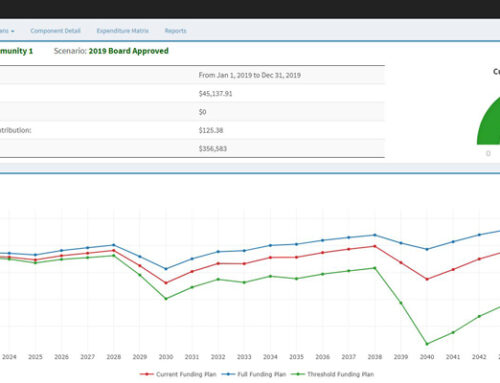Sometimes the first warning you get is a catastrophe: A bridge or balcony collapses, causing injury or death to residents, staff or guests. More frequently, a construction defect issue presents itself a little at a time: You notice that multiple members are reporting the same problem with moldy or crumbling drywall or leaky windows. And your own staff is noticing the same problem in the common areas.
Either way, HOAs need to be prepared to address construction defect issues. One wrong move can damage your case, and your ability to collect damages, leaving your members holding the bag.
Prevent a problem in the first place.
The best solution is to screen contractors thoroughly – and pay a fair price. When margins get too narrow, contractors may try to skimp on materials, labor, inspections or all three – leading to big problems down the road. The lowest bid isn’t always the best one.
Understand the strategic financial impact of defective construction.
If you take the litigation route, it could be months or years before you see compensation. You may not even win, in the end – and you’ll incur substantial legal costs along the way.
In the meantime, you’ll need to make some repairs and incur some expenditures, which will impact your reserves. You can use MyReserveStudy software to quickly and easily run some scenarios based on restoring the defective components to a fully functional, like-new condition, and easily see how that may affect your association’s financial stability and solvency – and help avoid or minimize potential assessments.
Verify insurance.
Next, ensure every general contractor you hire has sufficient general liability and contractors’ liability insurance in force to cover any potential issues. It’s a standard business practice to ask for proof of insurance before issuing a contract. You want to get written documentation that the general contractor has workers compensation insurance lined up, as well.
Have your maintenance ducks in a row.
If you sue a contractor for a construction defect, they may demand your maintenance records in the discovery process. If you sue after several years because a boiler was improperly installed, and the contractor demands you produce your maintenance records, and you don’t have them, that’s going to come up at trial.
Hire a qualified investigator.
It’s not enough just to have Schneider the Handiman take a few photos of defective windows. To make a construction defect claim stick, you should consider hiring a licensed engineer or contractor with experience at building inspections and buttressing construction defect claims. Whoever you choose is likely to be an invaluable witness at a trial. If they have a strong reputation, the contractor responsible for the defective construction or their insurance company’s lawyer is much more likely to settle quickly on terms favorable to you.
Don’t ignore issues.
If a member of the HOA board learns of a possible construction defect issue, it’s important to begin working it right away. Why? Because in many states, the statute of limitations clock starts ticking the moment the board learns of an issue. A sharp attorney will demand your HOA Board’s meeting notes and agenda and search for evidence that the board knew of a possible construction defect, or reasonably should have known about a defect years before the lawsuit. They can defeat the lawsuit by showing the court that the HOA ignored the information and that the statute of limitations has expired.
Furthermore, if you ignore a construction defect problem, you as a board member could come under legal fire: Association members may sue you for negligence and failure to meet your obligations as a fiduciary.
Know the timeline.
Some states have a “notice and opportunity to repair” law. This law requires construction defect plaintiffs to provide a written notice to a contractor of the nature of a construction defect, and a certain number of days for the contractor to repair. 90 days is common. During this time period, you must allow the contractor reasonable access to the property to conduct needed repairs.
It’s important to research any such laws in your state and to adhere to the legal requirements. Failure to comply with the timelines required by notice and opportunity to repair laws could cause courts to reject your complaint entirely.
Get member approval prior to litigation.
You don’t want to set sail into a potential battle without all hands on board. Besides – Notice and opportunity to repair laws and your own HOA bylaws may require member approval before the HOA files suit in a defective construction case.
Protect yourself against evidence concealment claims.
Don’t set your own crews merrily repairing defective construction willy-nilly if you expect you may have a defective construction case in the future. If you do, you potentially open yourself to a counterclaim: The builder may argue that your own staff or hired contractors concealed or destroyed evidence that would favor the builder’s case. They would argue that they were denied the opportunity to conduct their own investigation, and could easily have fixed the defect(s), but for your interference.
You may have a claim, even after a warranty period.
A builder may try to dissuade you from pursuing a construction defect case by pointing out that the written warranty period has expired. Indeed, case law is clear: You may be entitled to damages even if there was never an express written warranty in place. Basic standards of workmanship and habitability are implied in construction contracts unless specifically disclaimed in the contract.
So don’t be too easily intimidated by builder demands that you show them a warranty document or that the warranty is expired. You may well still have a case.
You still have to worry about the statute of limitations. That could blow up your case if you sit on your hands too long. But when it comes to basic workmanship and habitability issues, you still may have a case even in the absence of a warranty.





